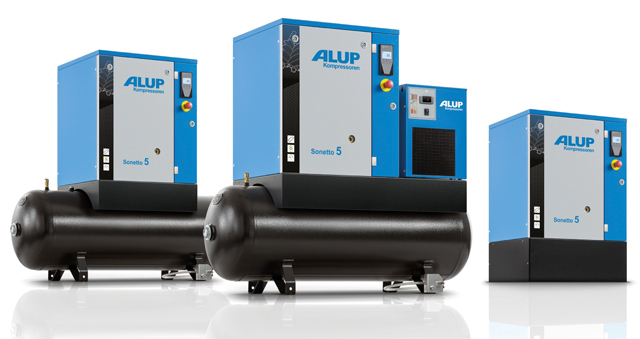Compressors can be a significant source of noise in the workplace. ALUP’S latest range is designed to change that, says Mark Keen, business line manager of supplier MultiAir UK & Ireland

In the UK, it is widely acknowledged that 15% of the population has suffered hearing loss, either as a result of a sudden exposure to loud noise or long-term exposure to machinery noise. A number of studies have shown that working in a noisy environment can cause irritation of the ear canal, muffled hearing and an elevated risk of developing tinnitus, a continuous ringing in the ears. Noise can also make it harder for workers to hear alarms, as well affecting concentration, both of which present a safety hazard.
As part of their responsibility for the wellbeing of employees, companies are obliged by law to take all necessary preventive measures to protect staff . In a factory or workshop, all machines generate some degree of sound and vibration. The average noise level for an industrial air compressor is 85dBA. This is higher than a phone’s ringtone, which is around 70dBA, but lower than most headphones, which can go up to 110dBA.
In accordance with the UK’s Control of Noise at Work Regulations 2005, employers must assess the risk to workers’ health and provide them with information and training if noise levels reach 80 decibels. When daily or weekly average exposure is up to 85 decibels, hearing protection must be provided and hearing protection zones introduced on the shop floor. In any event, workers must not be exposed to noise above 87 decibels.
In manufacturing and engineering, compressed air is often referred to as the fourth utility, so improving its efficiency and performance while reducing noise and energy consumption are key drivers for compressor development.
A compressor’s noise level can be influenced by a number of factors, the most obvious of which is proximity to the workforce.
For this reason, it’s common practice to isolate compressor equipment in separate and often outdoor locations, remote from the point of use. Though this reduces vibration and noise, it incurs cost and productivity penalties because of the drop in air pressure as a result of the greater length of pipework. Every increase in pressure of one bar to compensate for this drop incurs an extra power requirement of approximately 7%.
Ambient noise is influenced by the properties of the room that equipment is located in. Its size, construction materials and the presence of other machinery will all have an impact on noise levels. Though housing a compressor in a separate room reduces noise on the shop floor, this is not always an option, especially in smaller factory units.
The solution is the installation of quiet compressors, equipped with either a full or a partial enclosure that absorbs sound and reduces the noise level to well below 80dBA. Machines designed to meet this requirement, such as ALUP’s latest Sonetto range, can be placed right next to the point of use, as they achieve noise levels of as little as 61dBA. This new generation of powerful, quiet, oil-injected rotary screw air compressors feature the latest in air-end design, which makes possible 15% greater free air delivery (FAD) output and a reduction in energy consumption of up to 12%.
Rotary screw technology greatly reduces vibrations. By combining an anti-condensation oil heater, a tropical thermostat to maintain a higher running temperature and larger air receivers of up to 500 litres, the compressor can operate on very low duty cycles without the problem of condensation forming in the oil.
In manufacturing and workshop environments where there is a need for treated dry and filtered air, the air dryer in the new Sonetto versions uses a more environmentally-friendly refrigerant with 55% lower global warming potential than previous dryers.
With industries under pressure to reduce carbon emissions, such innovations will significantly help to lower environmental footprints, while reducing costs for manufacturers and improving the safety of the workforce.
marketing@multiairuk.com
www.alup.com/en-uk/News-and-events/Sonetto_3-9_introduction.html

